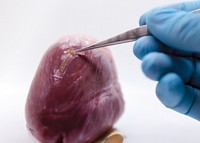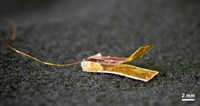Advertisement
Grab your lab coat. Let's get started
Welcome!
Welcome!
Create an account below to get 6 C&EN articles per month, receive newsletters and more - all free.
It seems this is your first time logging in online. Please enter the following information to continue.
As an ACS member you automatically get access to this site. All we need is few more details to create your reading experience.
Not you? Sign in with a different account.
Not you? Sign in with a different account.
ERROR 1
ERROR 1
ERROR 2
ERROR 2
ERROR 2
ERROR 2
ERROR 2
Password and Confirm password must match.
If you have an ACS member number, please enter it here so we can link this account to your membership. (optional)
ERROR 2
ACS values your privacy. By submitting your information, you are gaining access to C&EN and subscribing to our weekly newsletter. We use the information you provide to make your reading experience better, and we will never sell your data to third party members.
ACS Meeting News
Stretchy, conductive electrodes that can keep up with an octopus
Clever design leads to a polymer that combines stretchiness with high electrical conductivity
by Katherine Bourzac
August 24, 2022
| A version of this story appeared in
Volume 100, Issue 30

Materials for bioelectronics must often compromise between mechanical and electrical properties. In a talk at the ACS Fall 2022 meeting, Stanford University chemical engineer Zhenan Bao described her approach to designing polymers that bridge that gap, combining high electrical conductivity with soft, stretchy, tissue-like mechanical properties.
With careful chemical engineering, Bao’s group has made conductive-polymer electrodes that can stimulate single neurons in the brain stem without harming its delicate tissue. They then used the electrodes to measure electrical activity in an octopus’s muscles as the creature stretched and swam. Bao presented this work in the Division of Industrial and Engineering Chemistry on Monday.
Conductive polymers are in some ways ideal for making bioelectronics. Unlike conventional electronic materials, such as silicon and metal, they can be inherently soft and stretchable. But improving their electronic properties typically comes at a cost: the more crystalline a polymer is, the higher its electrical conductivity—and the less it will stretch.
Bao and her team decided to separate out these competing priorities by developing a polymer that interlocks separate parts, each optimized for conductivity, mechanical properties, or photopatternability.
The best polymer design started with a polyethylene glycol (PEG) backbone strung with sliding cyclodextrin rings, which were decorated with conductivity-boosting side chains and functional groups that make the material compatible with photolithography. The researchers then cross-linked this polymer with the conductive polymer PEDOT:PSS. PEG triggers PEDOT:PSS to aggregate and form highly conductive nanofibrils, and the sliding rings appear to prevent crystallization (Science 2022, DOI: 10.1126/science.abj7564).
The interlocked design “allows multiple functions to be incorporated into the molecules to meet the multiple requirements for our work,” Bao said in an email.
“This addresses the bottleneck of this entire field,” said Bozhi Tian, a chemist at the University of Chicago who was not involved with the work. The polymer’s electrical conductivity matches that of the best ones ever made, and it’s stretchier.
Tian likened the material to indium tin oxide, the rigid, transparent, conductive material used in solar cells, displays, and other devices. “You have something whose conductivity is comparable to inorganic materials, but it’s also stretchable,” he said. “The future impact is really huge.”
Bao’s team collaborated with neuroscientists and biologists to test electrodes made from the new material in two biological systems that are very challenging for conventional electronics.
First, the researchers looked at the brain stem, which controls the muscles of the face, among other functions. Rigid electrodes risk harm to this delicate part of the brain, whose tissue is very soft and in almost constant motion, jostled by neck movements. The Stanford team used its squishy polymer electrodes to stimulate single brain stem neurons in mice and measured the signals generated in the corresponding muscles and whiskers.
The stretchy electrodes also showed promise in advancing scientists’ understanding of an elusive undersea animal. “I’ve always loved the octopus because it is a very intelligent, soft creature,” Bao said. The cephalopod’s muscles undergo huge deformations as it swims, hunts, camouflages itself, and hides in very small spaces. All this motion disrupts contact with conventional large rigid metal electrodes. The group put its electrode array on an octopus and made the first measurements of electrical activity in its skin.
Bao told C&EN that she is currently working on designs that combine the conductor with stretchy semiconductors, which should enable them to build more complex bioelectronics, such as soft electrodes with built-in amplifiers.





Join the conversation
Contact the reporter
Submit a Letter to the Editor for publication
Engage with us on Twitter